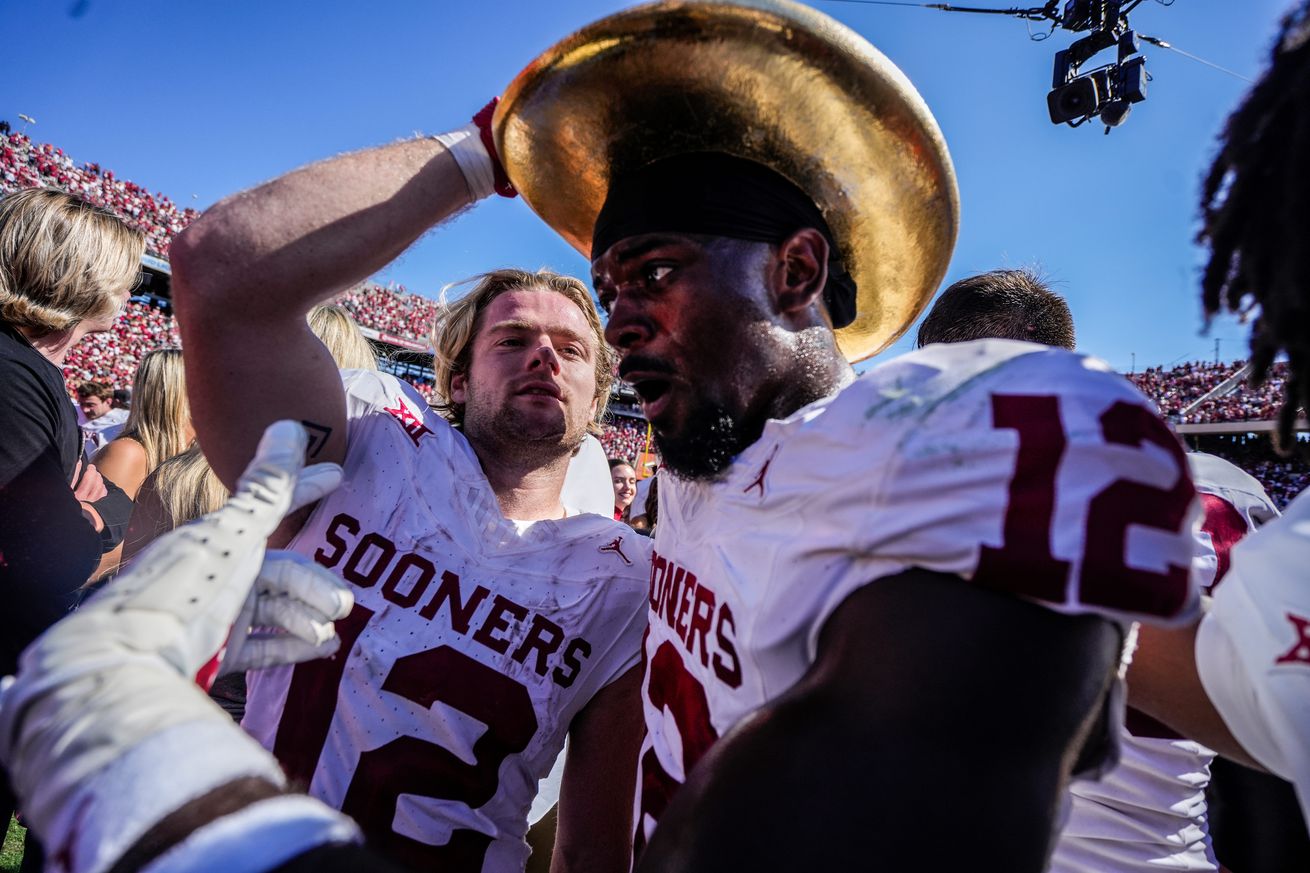Ricardo B. Brazziell/American-Statesman / USA TODAY NETWORK
The Sooners knew they could get after this Texas defense with motion and misdirection, and ran it to perfection.
In one of the greatest games of the college football season, Oklahoma slayed the giant, taking down Texas 34-30. It wasn’t an up and down affair like the ones of yore, but this year’s game featured a lot of cool aspects, and somewhat of a coming out party for this year’s Oklahoma team. The defense was the standout through most of the season, but on Saturday it was Dillon Gabriel and the Oklahoma offense that came to play, and produced the game-winning touchdown.
What immediately stood out throughout this game was how effective Gabriel was as a passer when motion was tagged onto the play. According to Sports Information Solutions, when any motion was included in his dropbacks, Gabriel went 11-for-15 (18 dropbacks) for 120 yards and the eventual game-winning touchdown. His Positive Play Rate on those plays using motion? A pristine 66.7 percent, and a total of 6.51 EPA on all of his attempts. Oklahoma broke all of Texas’ rules and brains with their motion, and did it once again on the last play of the game.
Oklahoma comes out in a 3×1 formation with a “nub” tight end (TE on the line of scrimmage is the only pass catcher to that side of the field). This formation is a popular one to run sprint out to one side, with maybe a pick play thrown in to free someone up to the wide side of the field. However, they bring WR Nicholas Anderson into motion across the formation, and now they’re in a 2×2 set.
Essentially, what the Sooners are running to the left side is a bench concept, with the tight end running an out towards the front pylon, and Anderson running to the back pylon on the left. It’s an incredibly ballsy play to run to the short side of the field, with more congestion in that area, but Oklahoma OC Jeff Lebby dressed it up really well. When Anderson goes into motion, Texas has a couple of options: the man who is covering Anderson can run with him, or Texas can “bump” it and slide all the responsibilities over one. The latter option works well against a team that runs a lot of slide routes and quick hitters out of motion, but it requires really good communication, and the Longhorns busted it on the most important play of the game.
If you watch, Anderson and the TE initially bump into each other, but because of the nub TE, the corner to the backside adds on as a blitzer. This throws in another wrench because instead of the Longhorns only having to deal with one receiving threat to that side with two defenders, now Oklahoma has added another threat, this one already in motion. The linebacker and backside safety don’t pass off the routes at all, and Anderson becomes a Red River Rivalry Hero.
Let’s watch from the end zone angle. Anderson’s man initially runs with him, but when he crosses the center, he waves out to the other safety. That’s now his man, or someone they have to account for. I really think the two receivers initially bumping into each other screwed with the heads of the Texas defenders for a split second, but at the highest levels of the sport, a split second is all you need. Also, shoutout to Oklahoma left tackle Walter Rouse, who BLOCKED TWO PEOPLE AT ONE TIME to allow Gabriel to get this pass off. When motion is so quick hitting and fast like Oklahoma can run it, it causes problems for other teams. Also, take note of the backside safety’s reaction. That’s how you can tell this was a busted coverage, tough.
Oklahoma offensive coordinator Jeff Lebby called a fantastic Red River Rivalry game, and it was capped off with this touchdown. The Sooners knew they could get after this Texas defense with motion and misdirection, and ran it to perfection.













